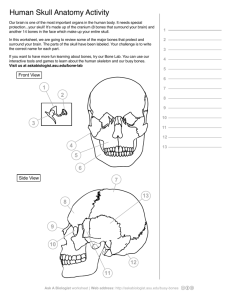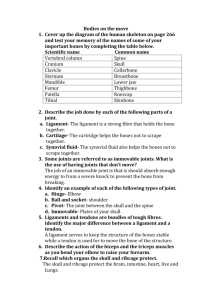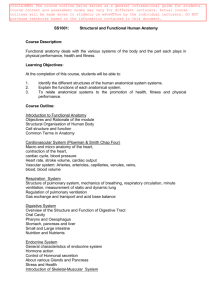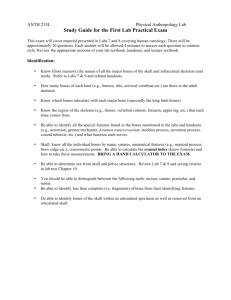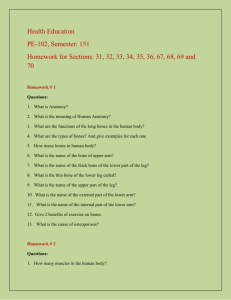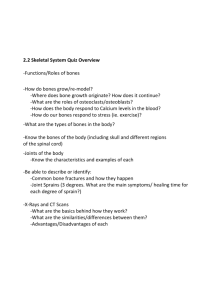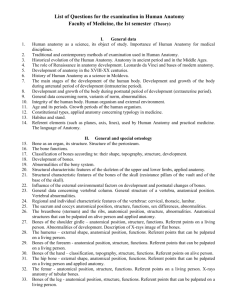ПО СИСТЕМАМ
advertisement
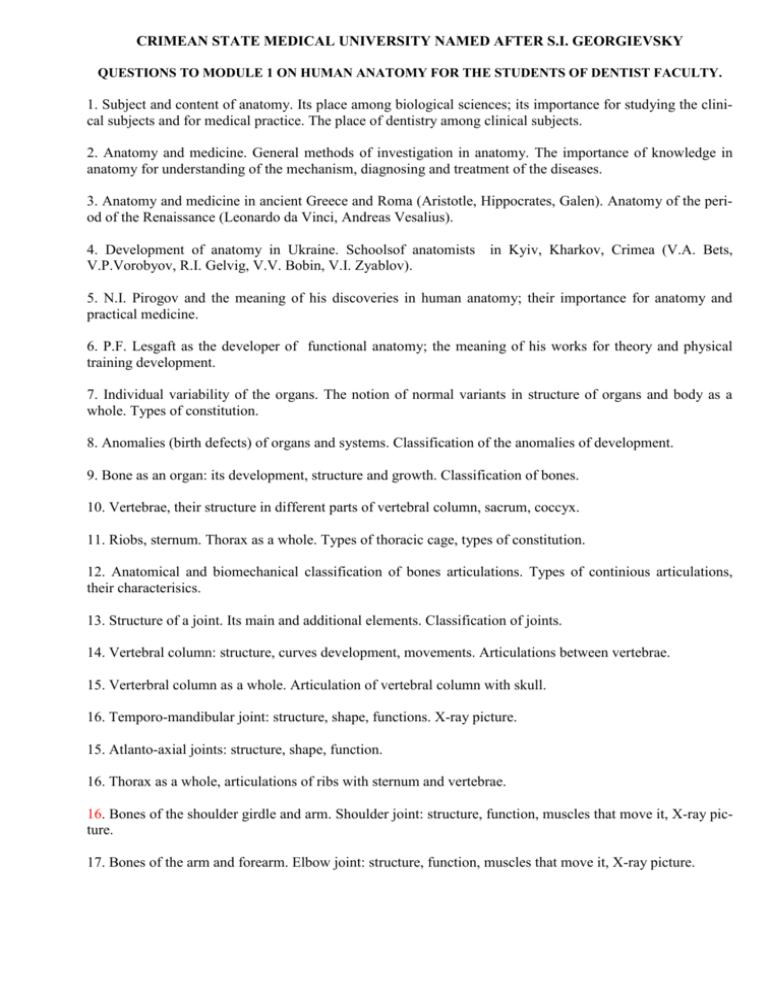
CRIMEAN STATE MEDICAL UNIVERSITY NAMED AFTER S.I. GEORGIEVSKY QUESTIONS TO MODULE 1 ON HUMAN ANATOMY FOR THE STUDENTS OF DENTIST FACULTY. 1. Subject and content of anatomy. Its place among biological sciences; its importance for studying the clinical subjects and for medical practice. The place of dentistry among clinical subjects. 2. Anatomy and medicine. General methods of investigation in anatomy. The importance of knowledge in anatomy for understanding of the mechanism, diagnosing and treatment of the diseases. 3. Anatomy and medicine in ancient Greece and Roma (Aristotle, Hippocrates, Galen). Anatomy of the period of the Renaissance (Leonardo da Vinci, Andreas Vesalius). 4. Development of anatomy in Ukraine. Schoolsof anatomists in Kyiv, Kharkov, Crimea (V.A. Bets, V.P.Vorobyov, R.I. Gelvig, V.V. Bobin, V.I. Zyablov). 5. N.I. Pirogov and the meaning of his discoveries in human anatomy; their importance for anatomy and practical medicine. 6. P.F. Lesgaft as the developer of functional anatomy; the meaning of his works for theory and physical training development. 7. Individual variability of the organs. The notion of normal variants in structure of organs and body as a whole. Types of constitution. 8. Anomalies (birth defects) of organs and systems. Classification of the anomalies of development. 9. Bone as an organ: its development, structure and growth. Classification of bones. 10. Vertebrae, their structure in different parts of vertebral column, sacrum, coccyx. 11. Riobs, sternum. Thorax as a whole. Types of thoracic cage, types of constitution. 12. Anatomical and biomechanical classification of bones articulations. Types of continious articulations, their characterisics. 13. Structure of a joint. Its main and additional elements. Classification of joints. 14. Vertebral column: structure, curves development, movements. Articulations between vertebrae. 15. Verterbral column as a whole. Articulation of vertebral column with skull. 16. Temporo-mandibular joint: structure, shape, functions. X-ray picture. 15. Atlanto-axial joints: structure, shape, function. 16. Thorax as a whole, articulations of ribs with sternum and vertebrae. 16. Bones of the shoulder girdle and arm. Shoulder joint: structure, function, muscles that move it, X-ray picture. 17. Bones of the arm and forearm. Elbow joint: structure, function, muscles that move it, X-ray picture. 18. Bones of the forearm and the hand, their articulations. Wrist (radiocarpal) joint: structure, function, muscles that move it, X-ray picture. 19. Bones of pelvis, their articulations. Pelvis as a whole. Distances in female’s pelvis. 20. Femur. Hip joint: structure, functions, muscles that move it, X-ray picture. 21. Bones of thigh and leg. Knee joint: structure, functions, muscles that move it, X-ray picture. 22. Bones of lef and foot, their articulations. Ancle joint: structure, functions, muscles that move it, X-ray picture. 23. Phylogenetic and ontogenetic development of skull. Individual, age-related and sexual peculiarities of the skull. 24. Articulations of the skull bones, types of sutures. Peculiarities of the skull of the newborn. 25. Skull as a whole. Individual, age-related and sexual peculiarities of the bones of the facial skull. 26. Bones of the facial skull: structure, topography, functions. 27. Upper jaw: development, age-related peculiarities and individual variations. 28. Structure of the upper jaw, description of the surfaces. 29. Structure of the upper jaw, description of the alveolar and zygomatic processes. 30. Structure of the upper jaw, description of the palatine and frontal processes. 31. Maxillary sinus, the walls. Relationship to the teeth of the upper jaw. 32. Infraorbital canal, its content, individual variations, canine fossa, zygomatico-alveolar crest. 33. Maxilla. Contrforces of the upper jaw. 34. Mandible: development, structure of the body and the alveolar part. 35. Structure of the mandible. Mandibular canal, relationship to teeth roots, content of the canal. 36. Anatomical characteristics of the mandible processes. Contrforces (buttresses) of the mandible. 37. Bones of facial skull. Palatine and zygomatic bones. Structure, foramens, their meaning. 38. Skull as a whole, its anatomical parts. Bones of the roof of skull: frontal, parietal, occipital. 39. Temporal bone: its parts, foramens, canals, their purpose. 40. Sphenoid bone: its parts, foramens, their purpose. 41. Anatomy of the pneumatic skull bones. Paranasal sinuses, their meaning, development and communications. 42. External surface of the skull base. Foramens, their content. 43. Internal surface of the skull base. Foramens, their content. 44. Orbit, structure of the walls, communications. 45. Temporal, infratemporal, pterygopalatine fossas, their topography, walls, communications. 46. Muscles of head. Muscles of mastication, structure, functions. 47. Muscles of head. Muscles of facial expression. Peculiarities in structure, function. 48. Bony-fascial and intermuscular spaces in head. 49. Muscles of the neck. Classification, structure, functions. 50. Topographical regions of neck, neck triangles. Their meaning. 51. Fascias of the neck, interfascial spaces: strucure, topography, functions. 52. Muscles and fascias of chest: strucure, topography, functions. 53. Diaphragm, its parts, topography, functions. 54. Muscles and fascias of the back: strucure, topography, functions. 55. Muscles and fascias of the shoulder girdle and arm: strucure, topography, functions. 56. Muscles and fascias of the forearm and hand: strucure, topography, functions. 57. Axillary fossa: its walls, foramens, their purpose. 58. Muscles of abdomen: structure, topography, functions. The sheath of the rectus abdominis muscle. Linea alba of abdominal wall. 59. Topographical anatomical regions of anterior abdominal wall. Inguinal canal, walls, content. 60. Muscles of pelvis: structure, topography, functions. 61. Muscles and fascias of thigh: structure, topography, functions. Femoral canal: the walls, content. 62. Muscles and fascias of leg and foot, structure, topography, functions.
